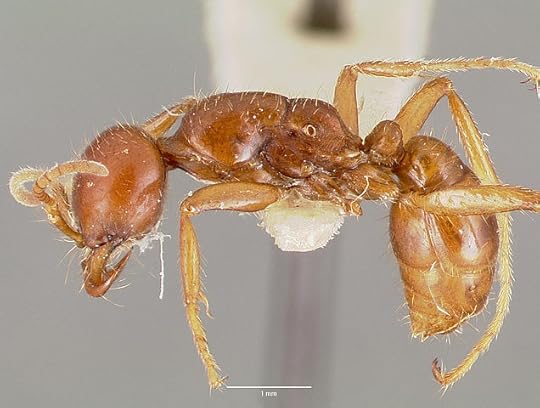Swarm Bots or Army Ants – Who’s Smarter? #nature #algorithms
“Interactions between members of a group can lead to extraordinarily efficient solutions or snowballing catastrophes.” While you might expect that to apply to groups of humans, (now that I think about it, I guess it does,) the quote comes from Swarm Lab, where scientists study swarm robotics (among other things, such as ants.) If ants, each with a minuscule brain, can create complex structures and behaviors, maybe robots can too.
 A collected army ant, because there doesn’t seem to be such a thing as a lone army ant in nature © AntWeb.org / CC BY-SA 3.0
A collected army ant, because there doesn’t seem to be such a thing as a lone army ant in nature © AntWeb.org / CC BY-SA 3.0Army ants live in large colonies, but have no permanent nests. They march through the jungle daily. When they come to a gap in their path, they build a bridge with their own bodies, and the group continues on. How do they do that?
Individual ants seem to decide based on a three-part algorithm – something that could be programmed into simple robots.
If you come to a gap in your path, slow down. (The ants behind you don’t know you’re stopping, so they keep marching along.)When you feel other ants walking on your back, freeze. (The ants on your back will do the same thing when they get to the end of your body and detect the gap, and so on and so on, until some ants reach the other side and keep walking.)When the weight on your back dips below some threshold (you don’t know it, but all your mates have crossed,) you rejoin the march. Quanta Magazine explains this, and also why they sometimes “choose” to go around a gap. Check out the article.That’s Collective Intelligence in Biological Systems. Ants don’t know they’re teaching us how to program robots. They’re just living the life they evolved to live. Information is all around us, and I’m glad some people are smart enough to notice.



